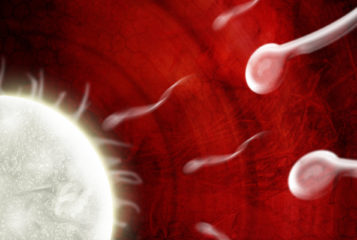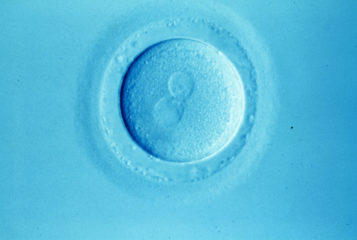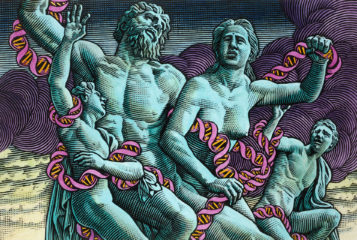In April 2009 the parenthood provisions of the Human Fertilisation and Embryology Act 2008 came into force. This governs parenthood following the use of donor gametes, including sperm.
The provisions were as follows. The woman who gives birth to a child will always be that child's legal parent. Sperm donors who donate in a licensed clinic will not be a legal parent. A child can have a maximum of two legal parents.
If a woman is married or in a civil partnership, then unless it is shown that the spouse or civil partner did not consent to the treatment, the spouse or civil partner will be the legal parent of a child. The reverse burden does not dilute the meaning of consent itself. A general 'awareness' that treatment is taking place is not sufficient, what is needed is 'consent' and this involves a deliberate exercise of choice. If a clinic is treating a woman who is married or in a civil partnership, but not treating her spouse or civil partner, it is prudent to ask her to complete an HFEA form LC.
If no spouse or civil partner is to be treated as a legal parent then another person (P) may be treated as a legal parent. The treatment must be provided under a licence. Prior to treatment, the person responsible must have been given written, signed notice from both the woman and P that they consent to P being the legal parent of the child. The HFEA has issued forms (WP) and (PP) for completion prior to treatment. There are further rules for the clinic about counselling.
However, in 2013 there was a court case where the rules had not been complied with (1). The mother had twins as a result of intrauterine insemination using donor sperm. At the time she was in a relationship with AB, who was named on the birth certificates. The mother and AB separated, and AB sought contact with the twins.
However, the judge found AB was not their legal parent, because the consent forms had not been signed or submitted prior to the treatment. In any event the forms were completed and submitted in breach of the clinic's licence conditions in that:
- there was no offer of counselling to the parties on this issue
- the 'consent' on the forms was not 'informed consent' as defined or discussed in Guidance
Following this case the HFEA asked all clinics to audit their records. The audit revealed 51 clinics (46 percent of all clinics in the UK) had anomalies in their records, comprising no fewer than 90 cases. Typically these errors were either that a form was missing or had not been completed correctly. To overcome such errors, the President of the Family Division has suggested that forms should be checked and then re-checked by another person entirely separate to the clinical team (2).
When these anomalies first came to light, it was erroneously believed by a number of people, including the HFEA, clinics, many family lawyers and a district judge that the only solution would be for the non-birth parent to adopt their child. In February 2015 the court granted a declaration of parentage to one such case (3), and in September 2015 the President of the Family Division gave judgment in seven cases (4). Further cases have subsequently been heard, and declarations of parentage have been granted where:
- it has been found using other evidence that there was a correctly completed form WP or PP but this has been lost
- errors on the forms can be corrected
- a clinic's internal consent forms are capable of constituting consent for the purposes of the Human Fertilisation and Embryology Act 2008
The Court has also revoked an adoption order and granted a declaration of parentage instead. This entire adoption process had proceeded upon what, in law, was a fundamentally false basis. At the time the adoption order was made, the applicant was in fact and in law the child's mother (5).
Yet while some clinics have been open and have paid for patients' legal costs, some clinics have been less forthcoming, resulting in being named and criticised by the courts. Criticisms include:
- taking eight months to inform the couple of the anomaly
- the initial letter from the clinic containing not a single word of apology or regret
- making an offer of £1000 hoping to achieve a full and final settlement
- encouraging the parties to seek legal advice 'if they are able to' without offering to pay for such advice
- failing to identify a file within an audit
- failing to disclose all records
- failing to comply with court orders
Regarding such actions, the President of the Family Division has said that 'if ever there was a situation calling for empathy, understanding, humanity, compassion and, dare one say it, common decency, never mind sincere and unqualified apology, it is surely this'. (6)
Although finding errors and anomalies may be a source of some embarrassment for clinics this is only compounded when the response to those affected is unapologetic and unhelpful. Clinics would therefore do well to heed the comments made the President of the Family Division. They should seek legal advice, notify patients promptly, and offer both apologies and to pay the patient's legal costs. Clinics should also assist with the court proceedings.
Patients who learn of such anomalies should obtain specialist legal advice. Their solicitor should liaise with the clinic to obtain funding for this. I am a family law solicitor, however I have particular expertise in alternative parenthood following assisted reproduction. On being contacted by parents who had been notified by clinics that the only solution to rectify the situation was through an adoption order, I was adamant that this was not a satisfactory course of action. I subsequently represented an applicant in the leading case heard before the President of the Family Division in September 2015. I also represented the applicant who successfully revoked the adoption order. Her application was described by the President of the Family Division as being 'unprecedented and far removed on its facts from any of the previous reported cases'. I have been invited by various clinics to speak to practitioners on how to avoid making mistakes in the future and ensuring that all legal requirements are met.
Sources and References
-
3) X v Y v St Bartholomew's Hospital Centre for Reproductive Medicine (Assisted Reproduction: Parent) [2015] EWFC 13 (13 February 2015)
-
1) AB v CD [2013] EWHC 1418 (Fam) (24 May 2013)
-
5) Case O (Human Fertilisation and Embryology Act 2008) [2016] EWHC 2273 (Fam) (13 September 2016)
-
2) A & Ors (Human Fertilisation And Embryology Act 2008) [2015] EWHC 2602 (Fam) (11 September 2015)
-
4) A & Ors (Human Fertilisation And Embryology Act 2008) [2015] EWHC 2602 (Fam) (11 September 2015)
-
6) G, Re (Human Fertilisation And Embryology Act 2008) [2016] EWHC 729 (Fam) (06 April 2016)






Leave a Reply
You must be logged in to post a comment.